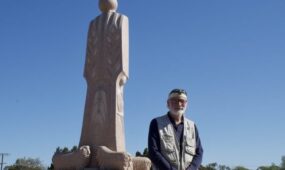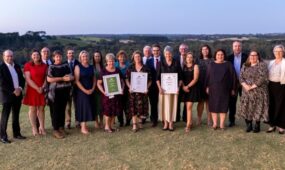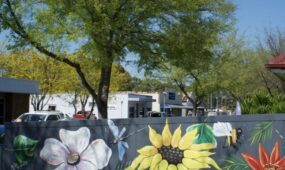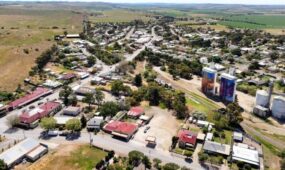South Australia leads regional real estate boom by a country mile
Regional
The Yorke Peninsula has become a real estate hotspot as country South Australia takes the mantle for the fastest growing regional house prices in the nation.

Sign up to receive notifications about new stories in this category.
Thank you for subscribing to story notifications.
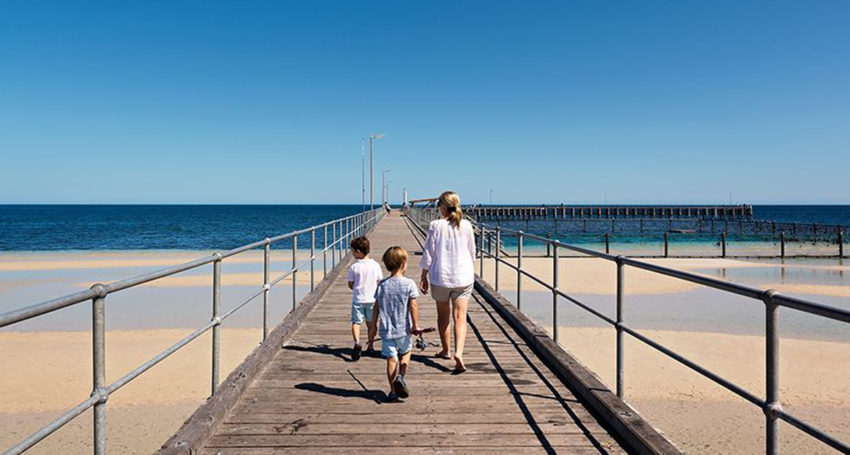
CoreLogic’s Home Value Index for the 12 months to March 31 shows the property market in regional SA grew by 2.8 per cent for the month of March and 7.4 per cent in the first three months of 2022 – faster than any other country jurisdiction in Australia.
Regional Queensland was the next fastest growing area with a 6.1 per cent jump for the three months to the end of March.
The Yorke Peninsula led the way with five of the top 10 fastest growing towns in the state including Stansbury, Ardrossan and Marion Bay.
Ray White Yorke Peninsula co-owner David Bussenschutt said the boom was a combination of holiday house sales and people choosing to relocate permanently to Yorke Peninsula from Adelaide and interstate.
He said while a collision of high demand and a severe supply shortage had led to a sharp increase in prices, the region still represented excellent value when compared to suburban Adelaide.
“The pandemic taught us that we can work from anywhere and we are seeing some people who are doing that but it’s also people moving here because they might have come here on holidays and now they want to live here,” Bussenschutt said.
“But it’s just taken off and it’s starting to get a bit crazy. It’s really hard for us as agents to put an exact price on things these days whereas we used to be able to.”
According to ABS data released last month, Yorke Peninsula’s population grew by 268 people in the 12 months to June 30, 2021, giving it a population of about 26,700.
Bussenschutt and his wife Melissa started their Yorke Peninsula business in 2010 and are now among the biggest players in the region with offices in Yorketown, Ardrossan, Moonta and Kadina.
“We’ve never seen so many sales in some of those small coastal towns – the sales in most places in 2020 and 2021 have eclipsed everything we’ve got on record,” he said.
“I think it will plateau soon – I don’t see a crash – I think the heat will come off it a little bit but I don’t see it falling away because there is a real shortage of stock here.”
Bussenschutt said the boom was entering its third year but had been a long time coming after almost a decade of “extremely quiet” conditions.
“We started our business in 2010 and it fell away the minute we opened our doors but it taught us how to survive in a tough market,” he said.
“The number of sales fell right away and they started to pick up in late 2019 just before COVID hit.
“We thought that would be the end of us but it just had the opposite effect – it just went crazy.
“We had bucket loads of stock – stuff that had been on the market for five years in some instances and now we can’t keep them on the market for five minutes.”
In Adelaide, house prices grew by 1.9 per cent in the month of March and 5.7 per cent for the quarter with a median sale price of $602,717.
Despite recording growth for the past 12 months of 26.3 per cent, the CoreLogic data suggests the Adelaide market peaked in January and that the sharpest price hikes could be finished.
CoreLogic’s research director Tim Lawless said there was mounting evidence that housing growth rates were losing momentum across Australia.
“Virtually every capital city and major rest-of-state region has moved through a peak in the trend rate of growth sometime last year or earlier this year,” he said.
"There are a few exceptions to the slowdown, with regional South Australia recording a new cyclical high over the March quarter and some momentum is returning to the Perth market where the rate of growth is once again trending higher since WA re-opened its borders.”
In Adelaide, five of the six top-performing locations were in the eastern foothills including the suburbs of Beaumont, Glen Osmond, Stonyfell and Wattle Park.
According to CoreLogic, the continued growth of Adelaide and Brisbane compared to the recent flat performance of Melbourne and Sydney can be linked to the availability of housing stock for sale in each market.
“In Melbourne, total advertised supply was 8 per cent above the previous five-year average towards the end of March, while the number of homes available to purchase in Sydney had virtually normalised to be 7.5 per cent higher than a year ago and only 2.6 per cent below the five-year average,” the CoreLogic Home Value Index report found.
“In contrast, advertised stock levels in Brisbane and Adelaide remain more than 40 per cent below the previous five-year average levels and around 20 per cent to 25 per cent down on a year ago.
“It’s a similar scenario across regional Australia, where total advertised housing stock was 22 per cent below last year’s level and 43 per cent below the previous five-year average.
“Such low inventory levels along with persistently high buyer demand continues to create strong selling conditions in these areas, supporting the upwards pressure on prices.”
Jump to next article

